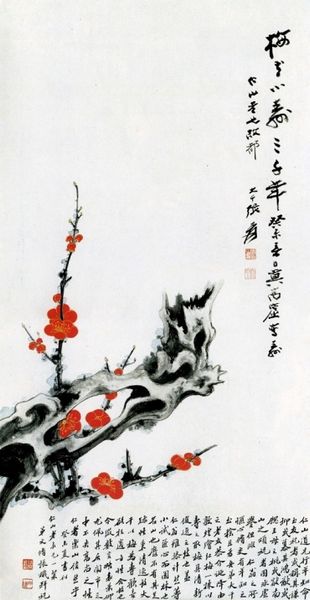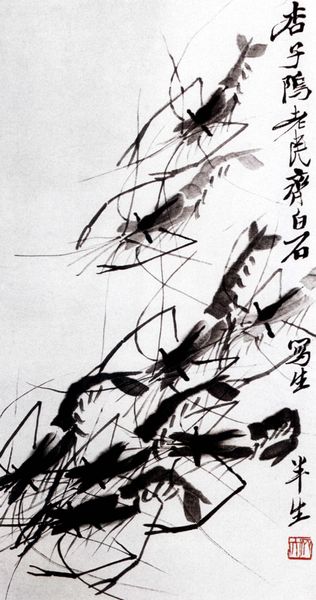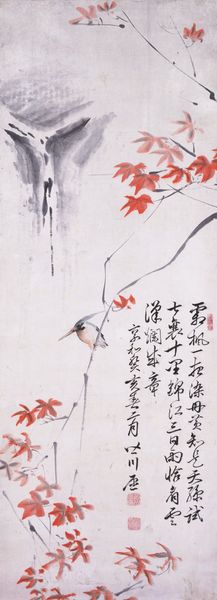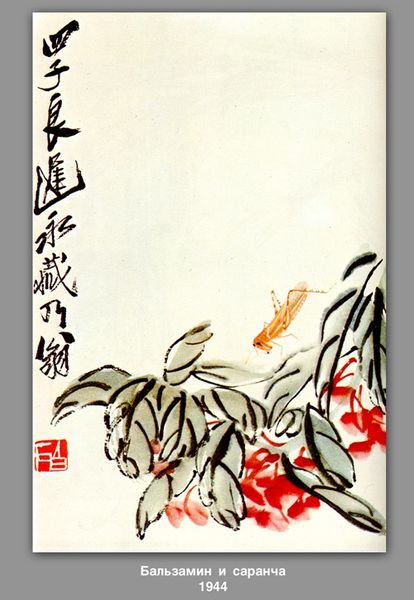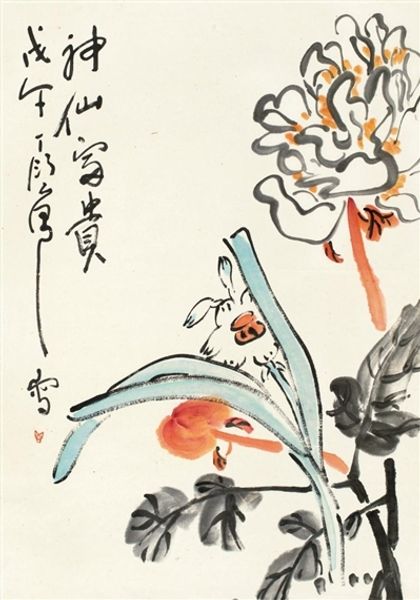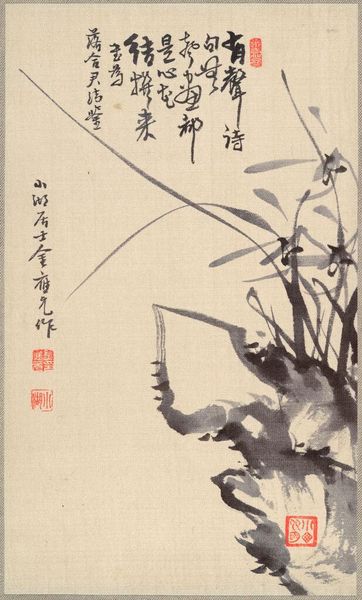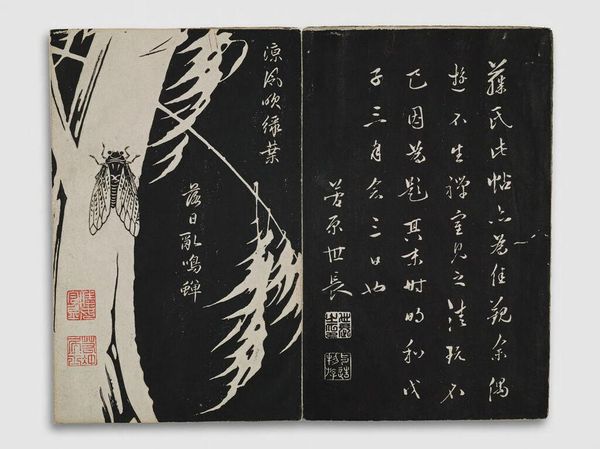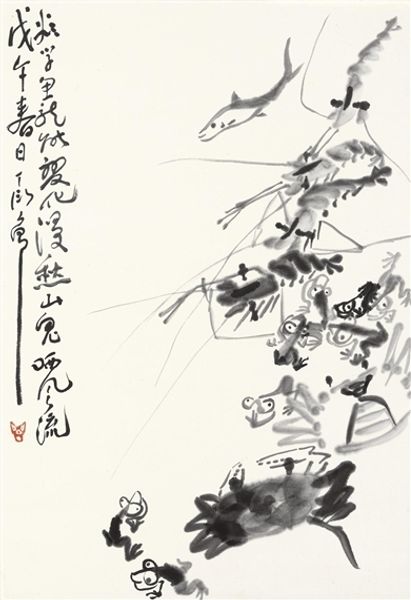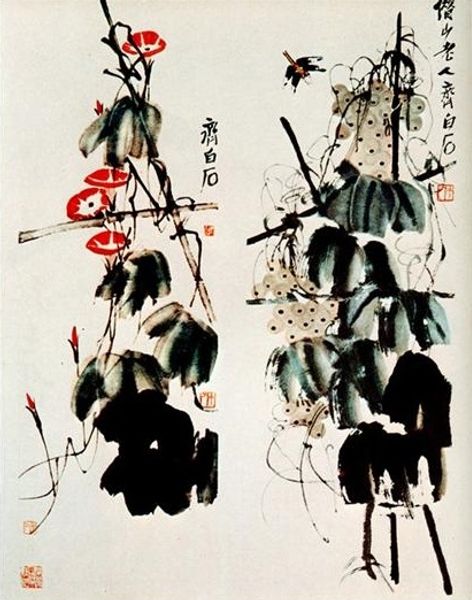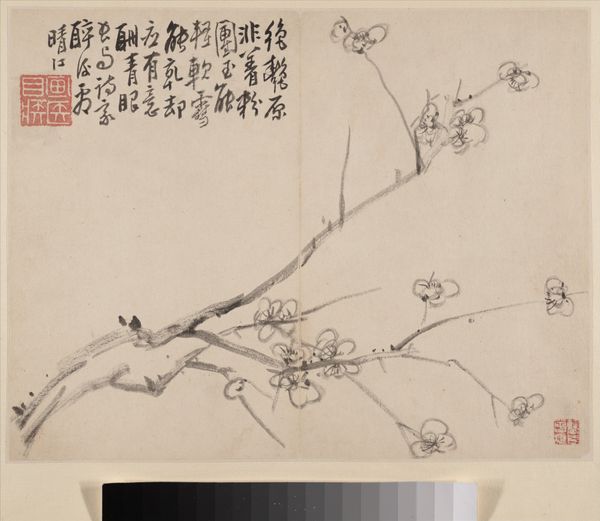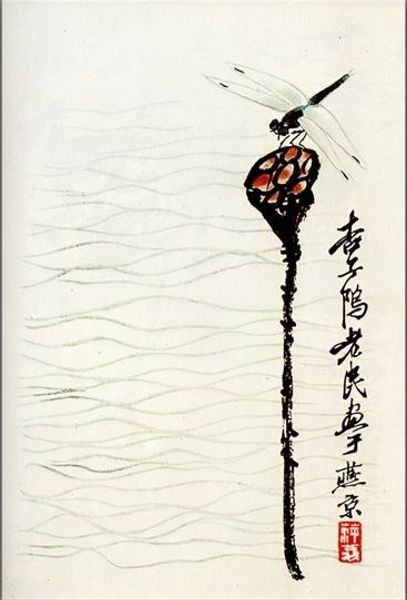
Copyright: Public domain China
Editor: We’re looking at Qi Baishi’s "Bindweed, dodder" from 1951. It's created with ink and watercolour. There’s a real lightness of touch, and I love how the vibrant flowers pop against the monochrome leaves and those delicate tendrils. It feels so alive! What jumps out at you in this piece? Curator: Alive is the perfect word! Qi Baishi… ah, he’s winking at us, isn't he? You know, to me, it's all about the dance. The way those tendrils curl, like mischievous thoughts, and how the colours – that almost aggressive red – fight against the disciplined ink strokes. It’s a garden wrestling with its own wildness! It reminds me of my own garden, frankly, always threatening to swallow the patio furniture. Do you see that tension? Editor: Yes! And it’s also kind of funny… Is that a grasshopper perched so carefully on a stem? It almost looks like it's directing the chaos! Curator: Exactly! That little fellow is key. For Qi Baishi, these weren't just decorative images. These seemingly small creatures and humble plants represent vitality, persistence and an intimate connection with nature. I’d even say he uses humor as a subversive act; what's typically considered worthless has worth here. The calligraphy also contributes to that lively essence. Is there a relationship you perceive there? Editor: I didn’t think of that! It's like he's captured a fleeting moment, but given it so much weight and humour at the same time! Looking more closely, I see a strong contrast to other more traditional styles of botanical illustration. It makes it feel more contemporary and… well… relatable! Curator: Precisely. He elevated the everyday with a wink and a flourish. And that, my friend, is genius. Editor: I will never look at bindweed the same way again! Thanks, I really appreciate your insights!
Comments
No comments
Be the first to comment and join the conversation on the ultimate creative platform.
